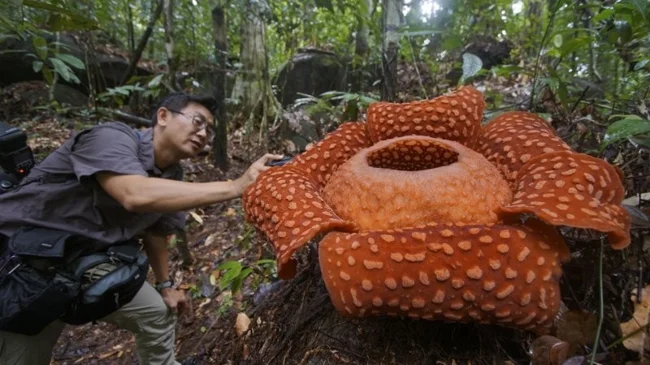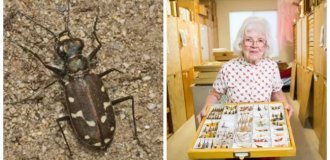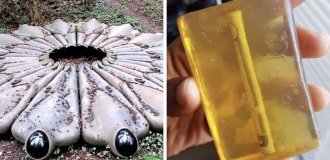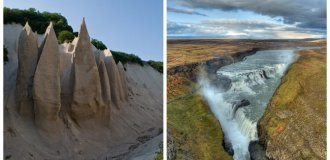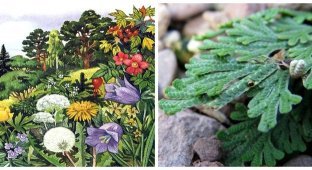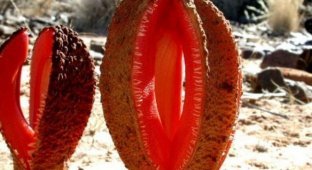A man couldn't hold back his tears: he spent 13 years searching for one of the rarest flowers in the Indonesian jungle (6 photos + 1 video)
Chris Thorogood, Associate Professor of Biology at Oxford University, spent days and nights exploring the jungles of West Sumatra in search of the rare Rafflesia. These parasitic plants are found only in this region of Indonesia and bloom for only a few days. Researchers discovered the flower just as it was opening after nine months of growth. While filming, local guide and conservationist Septian Andriqi burst into tears of admiration. 
"It's okay, we did it!" Dr. Thorogood reassured his colleague, who was unable to hold back his tears. "We found it, my friend."
Rafflesias are plants known for their gigantic flowers. Among them, the Rafflesia arnoldii stands out. Its flowers reach a meter in diameter and can weigh up to 11 kilograms. 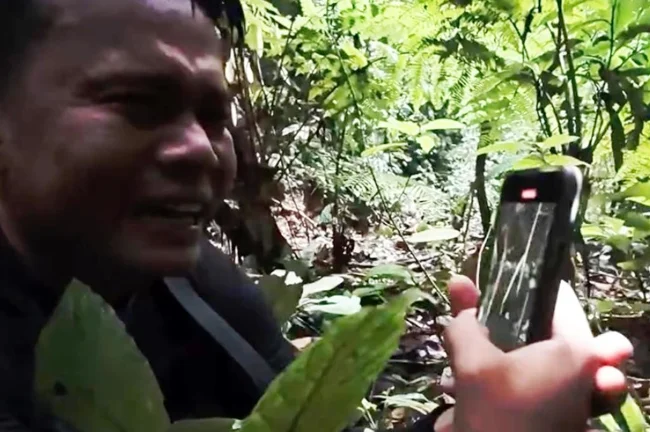
"Corpse flowers" got their eerie name from the terrible smell of rotting meat. This attracts flies and beetles, luring them into their cave-like flowers. There, the insects collect pollen and distribute it throughout the dense tropical forest.
Thorogood was lucky enough to find the Rafflesia Hasseltii. The plant, known by its Indonesian name "Cendawan Muca Rimau," meaning "tiger-faced mushroom," can only be found in remote corners of the tropical rainforests of West Sumatra. A special permit is required to access it. Scientists claim it's so rare that more tigers have seen it than people.

Torgud, Andriqi, and local guide Ivan Iswandi set out into the jungle on a research and conservation mission.
60% of Rafflesia species are endangered, and 67% of their natural habitats are located outside protected areas.
The discovery of the Hasseltii Rafflesia in bloom was a true event. Andriki has dedicated the last 13 years to searching for the rare flower.

"Septian Andriki burst into tears. Sitting with this flower was something otherworldly—as if it had arrived from another planet. It takes up to nine months for a bud to develop, and it blooms in just a few days. The Rafflesia blossomed right before our eyes. It felt as if it had opened especially for us," the British biologist shared.

